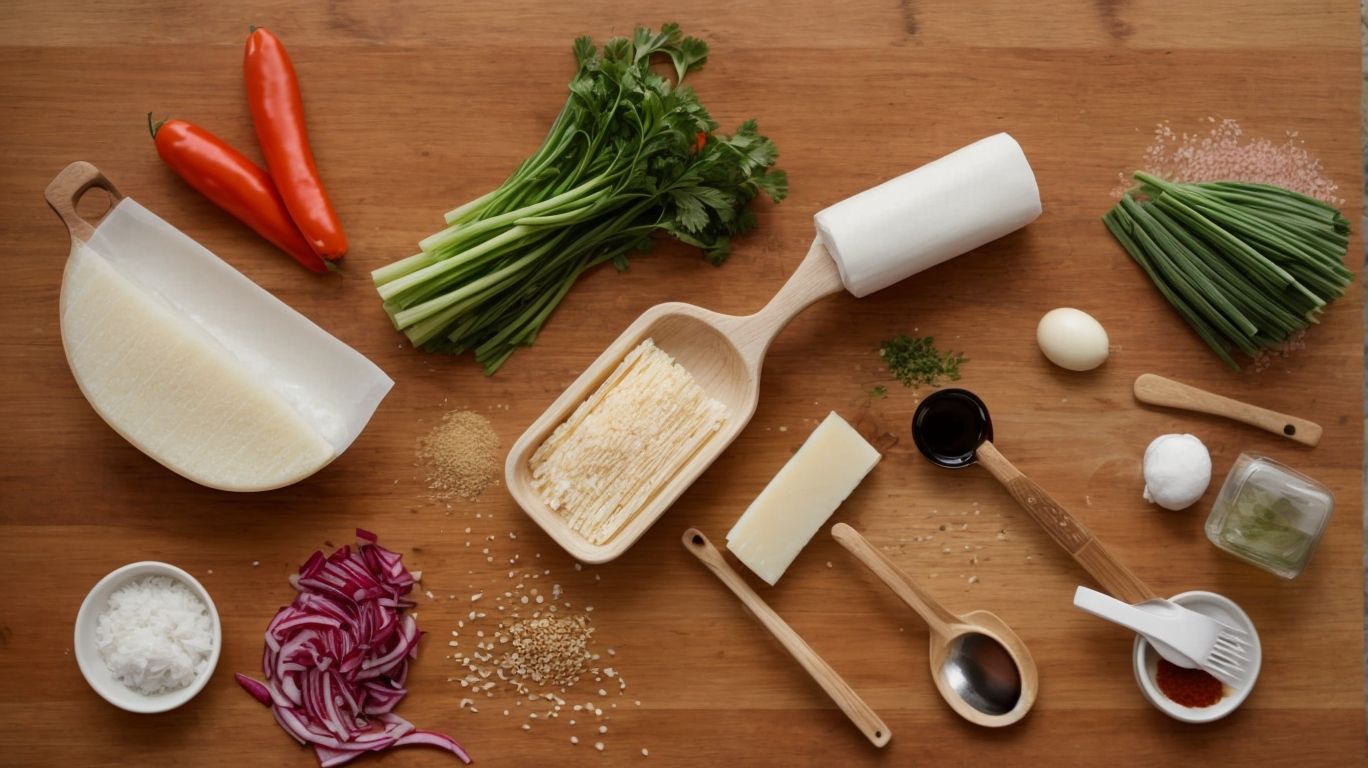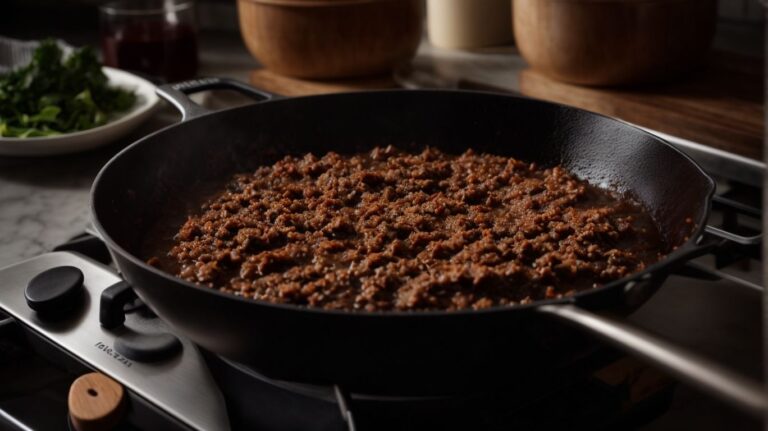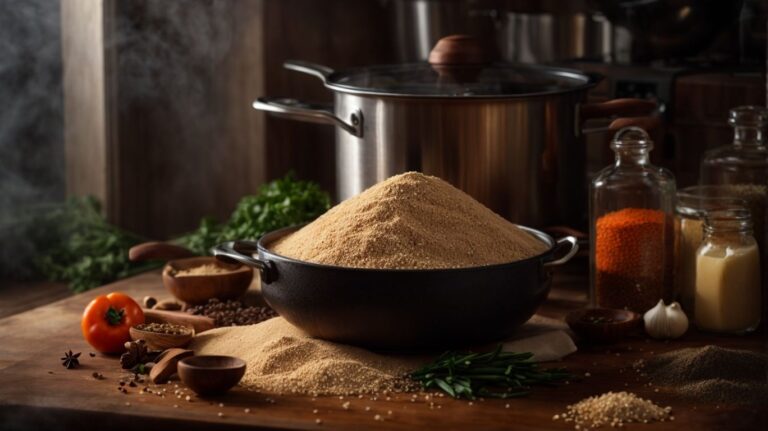How to Cook With Kimchi?
Are you a fan of Korean cuisine or looking to add some new flavors to your cooking repertoire?
If so, then you’ll definitely want to learn more about kimchi. In this article, we’ll explore everything you need to know about kimchi – from its ingredients and nutritional benefits to its various types and how to make it at home.
We’ll also discuss how to cook with kimchi and share some delicious recipes that incorporate this fermented delicacy. So, grab a kimchi jar and let’s get cooking!
Key Takeaways:
What Is Kimchi?
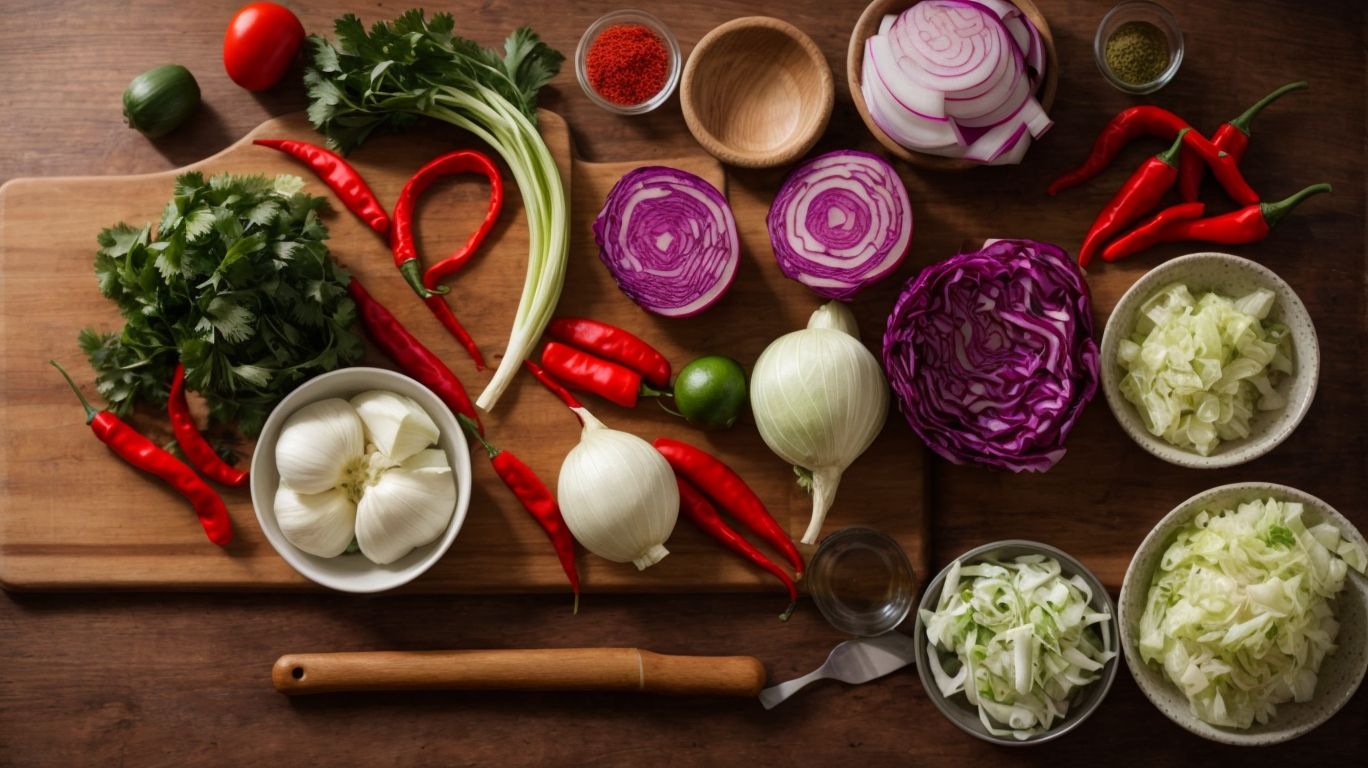
Credits: Poormet.Com – Roy Campbell
Kimchi is a staple in Korean cuisine, known for its bold flavors and versatility in dishes.
Its roots can be traced back centuries, where it was initially developed as a way to preserve vegetables during harsh winters. This fermented dish typically consists of cabbage, radish, and a mixture of seasonings like garlic, ginger, and chili peppers. The process of making kimchi involves salting the vegetables and allowing them to ferment, creating that signature tangy and spicy taste.
Kimchi holds significant cultural importance in Korea, often representing tradition and family ties. It’s not just a side dish but a crucial component in many Korean meals, adding depth and a punch of flavor. This iconic dish is so versatile that it can be enjoyed on its own, used in stews, stir-fries, or even incorporated into kimchi fried rice for a delicious twist.
What Are the Ingredients in Kimchi?
Kimchi typically consists of ingredients such as cabbage, spicy gochujang, garlic, and ginger, creating a flavorful and tangy profile.
These key ingredients play essential roles in the rich flavor development and fermentation process of kimchi. Cabbage, the main vegetable base, provides a crisp texture and absorbs the spicy flavors well. Gochujang, a Korean chili paste, adds heat and depth to the dish, while garlic infuses a pungent kick and aids in fermentation. Ginger contributes a subtle warmth and complexity to the overall taste profile. Together, these components undergo a transformative process, enhancing the kimchi’s complexity and umami essence.
What Are the Nutritional Benefits of Kimchi?
Kimchi offers various nutritional benefits, including being rich in probiotics, vitamins, and minerals due to the fermentation process.
Probiotics found in kimchi are live bacteria that can help maintain a healthy balance of gut flora, supporting digestion and overall gut health. This traditional Korean dish is also a great source of fiber, which can aid in regulating bowel movements and promoting a healthy digestive system. Along with its probiotic content, kimchi is packed with essential nutrients like vitamin C, vitamin K, and various antioxidants that contribute to immune function and overall well-being. By adding kimchi to your diet, you can enjoy a flavorful way to support your health from the inside out.
How Is Kimchi Used in Cooking?
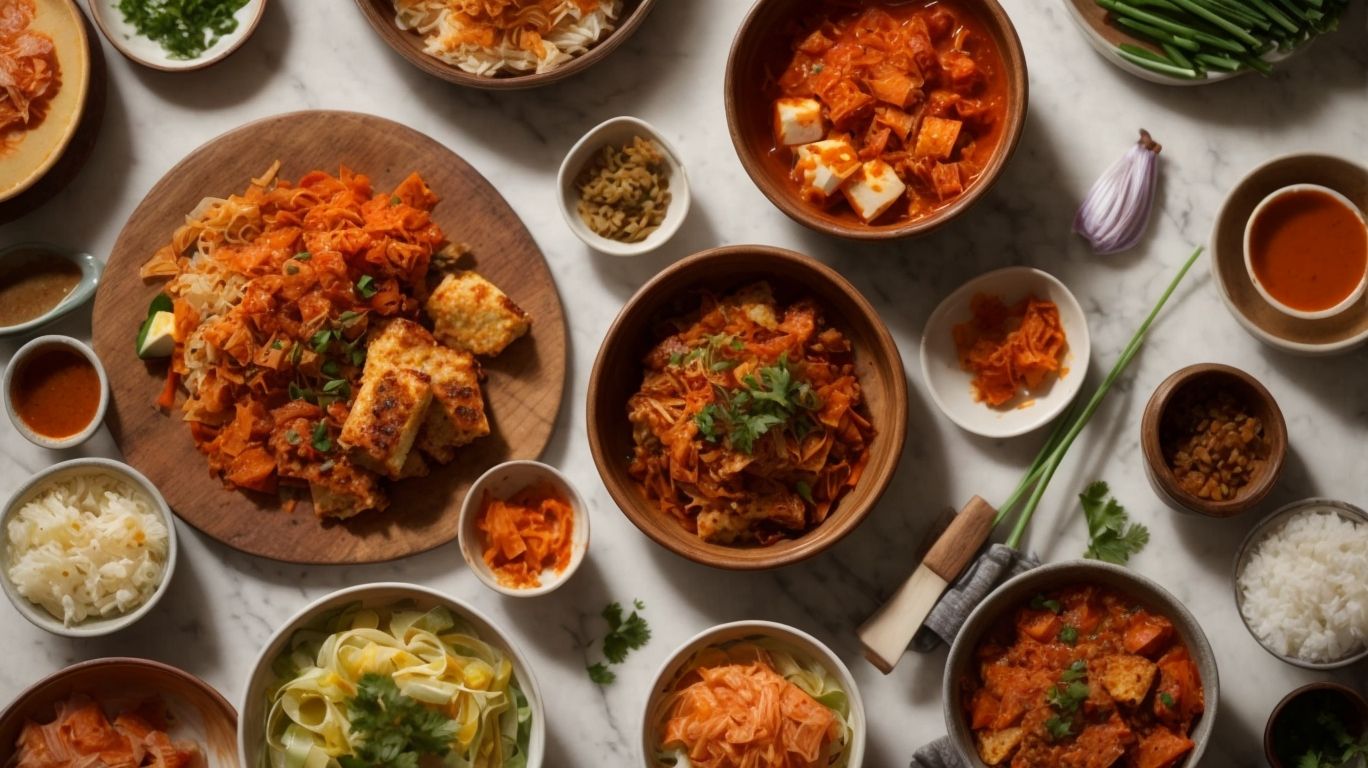
Credits: Poormet.Com – Zachary Young
Kimchi is a versatile ingredient in cooking, often used in traditional Korean dishes as well as fusion creations like kimchi pizza and BBQ.
Its bold and tangy flavors, achieved through the fermentation process of lactic acid bacteria and spices, lend a unique taste to various cuisines. In traditional Korean meals, kimchi is a staple side dish, providing a spicy and crunchy contrast to rice and meat dishes.
Its adaptability goes beyond traditional boundaries; modern chefs have incorporated kimchi into innovative recipes such as kimchi tacos or kimchi grilled cheese to add a kick of flavor and depth to their creations.
What Are Some Traditional Korean Dishes That Use Kimchi?
Traditional Korean dishes utilizing kimchi include kimchi stew, pancakes, BBQ, rice bowls, noodle bowls, and lettuce wraps.
Kimchi, a fermented vegetable dish typically made with cabbage and radishes, is a staple in Korean cuisine and plays a central role in various traditional recipes. The rich and tangy flavors of kimchi can be found in dishes like kimchi stew, where its spicy kick adds depth to the broth, creating a harmonious blend of flavors. Kimchi pancakes, known for their crispy texture and savory taste, are a popular side dish that showcases the versatility of this fermented delight. Whether grilled in BBQ, mixed in rice bowls, or served in noodle bowls, kimchi imparts a unique umami flavor that is beloved by many Koreans.
How Can Kimchi Be Incorporated into Non-Traditional Dishes?
Kimchi can add a unique twist to non-traditional dishes like kimchi pasta, sandwiches, snacks, and comforting meals.
Many people are surprised by how versatile kimchi can be in the kitchen. Its tangy and spicy flavors can complement a wide range of dishes, making it a favorite among those who enjoy experimenting with different cuisines.
One interesting way to use kimchi is in fusion recipes, such as kimchi grilled cheese or kimchi quesadillas, which combine traditional Korean flavors with Western comfort food.
Adding kimchi to dishes like macaroni and cheese, burgers, or even pizza can introduce a whole new level of excitement to familiar comfort foods.
What Are the Different Types of Kimchi?
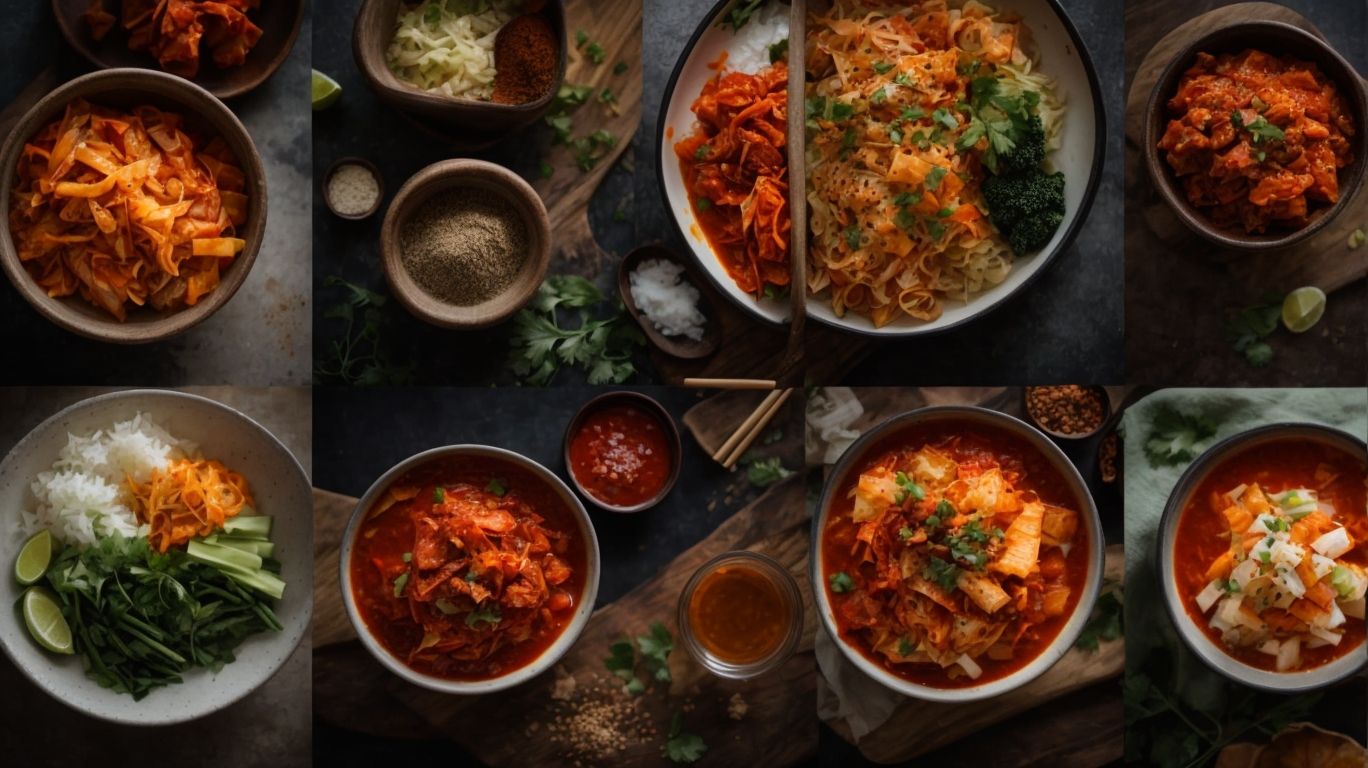
Credits: Poormet.Com – Andrew Garcia
Kimchi comes in various types, such as Napa cabbage kimchi, daikon radish kimchi, and vegetable kimchi, each offering unique flavor profiles.
These variations in kimchi reflect the rich culinary heritage of Korea, where regional differences and family recipes play a significant role in the creation of this popular dish.
- Napa cabbage kimchi, known as ‘baechu kimchi,’ is perhaps the most well-known type, featuring a combination of garlic, ginger, and Korean red pepper flakes.
- On the other hand, daikon radish kimchi, or ‘kkakdugi,’ offers a crunchy texture and a slightly sweeter flavor compared to cabbage kimchi.
- Vegetable kimchi, which includes a mix of different vegetables like cucumbers, carrots, and scallions, is a milder and more versatile option that can appeal to a wider range of palates.
What Are the Differences in Flavor Profiles Between Types of Kimchi?
The flavor profiles of various kimchi types differ, ranging from salty and funky notes in traditional recipes to more nuanced flavors from ingredients like fish sauce and sesame seeds.
For example, traditional Napa cabbage kimchi is known for its bold and pungent taste, thanks to the combination of garlic, ginger, and Korean red chili flakes. On the other hand, white kimchi, a milder variation, offers a refreshing tanginess with its use of pear and radish, creating a more delicate flavor profile.
Kkakdugi kimchi, made with diced radish, carries a crunchy texture and a slightly sweet and sour taste, perfect for those who prefer a less spicy option. Kimchi made with cucumber presents a unique crispness and a refreshing zing, contrasting with the rich umami flavors found in cabbage-based kimchi variations.
How to Make Kimchi at Home?
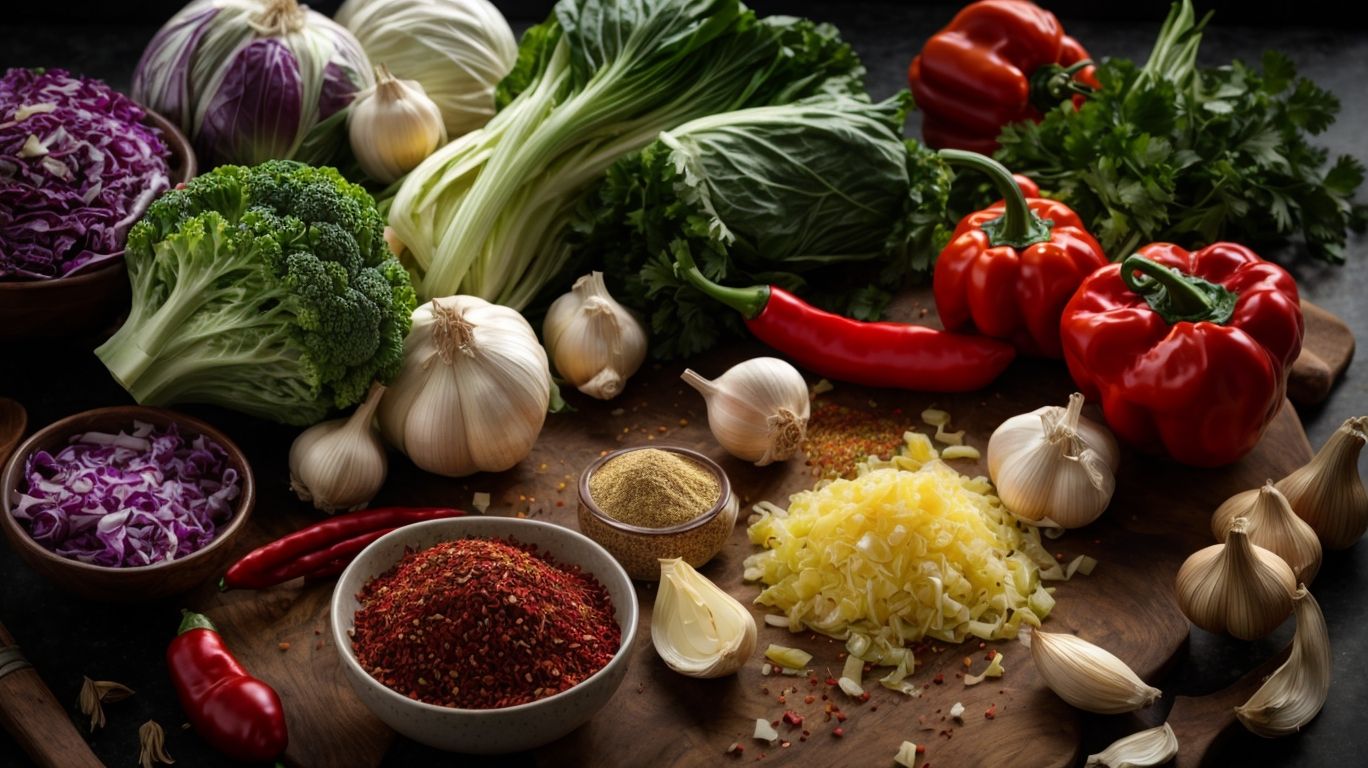
Credits: Poormet.Com – Mason Taylor
Making kimchi at home involves a traditional fermentation process that includes pickling ingredients like garlic, scallions, ginger, and fish sauce.
To begin the kimchi-making process, gather the necessary ingredients such as Napa cabbage, Korean red chili powder, and sea salt. Wash the cabbage thoroughly and cut it into quarters, leaving the core intact to maintain structure during fermentation. Sprinkle the cabbage with sea salt and let it sit for a few hours to draw out excess water.
- Next, prepare the kimchi paste by blending garlic, ginger, scallions, fish sauce, and Korean red chili powder. Adjust the spice level according to your preference.
After rinsing the cabbage, evenly spread the kimchi paste between the leaves, ensuring each piece is generously coated. Pack the cabbage tightly into an airtight container, pressing out any air bubbles.
What Are the Steps to Making Kimchi from Scratch?
The process of making kimchi from scratch involves brining cabbage with salt, packing it in jars or quart containers for fermentation.
After brining the cabbage with salt to draw out excess moisture and create the ideal texture, the next step is to rinse it thoroughly to remove any excess salt.
Once rinsed, prepare the kimchi paste by mixing together ingredients like Korean red pepper flakes, garlic, ginger, and fish sauce in a bowl.
Then, thoroughly coat each cabbage leaf with the kimchi paste, making sure to work it into the layers. Pack the seasoned cabbage tightly into jars or quart containers, pressing down firmly to remove any air bubbles and ensure proper fermentation.
What Are Some Tips for Making the Best Kimchi at Home?
To achieve the best homemade kimchi, consider tips like fermenting to the desired tanginess, using quality ingredients like garlic cloves, carrots, and onions.
Another key aspect in perfecting your homemade kimchi is the fermentation process. Ensuring that your kimchi ferments at the right temperature and for the appropriate duration is crucial in developing the signature tangy flavors. You can experiment with different levels of fermentation to find the taste that suits your palate best.
Additionally, selecting fresh and ripe vegetables is essential for a vibrant and flavorful kimchi. Opt for organic produce whenever possible for a cleaner and more authentic taste. Don’t skimp on the spice either; Korean red pepper flakes, fish sauce, and ginger are some traditional ingredients that add depth and complexity to your kimchi.
How to Cook with Kimchi?
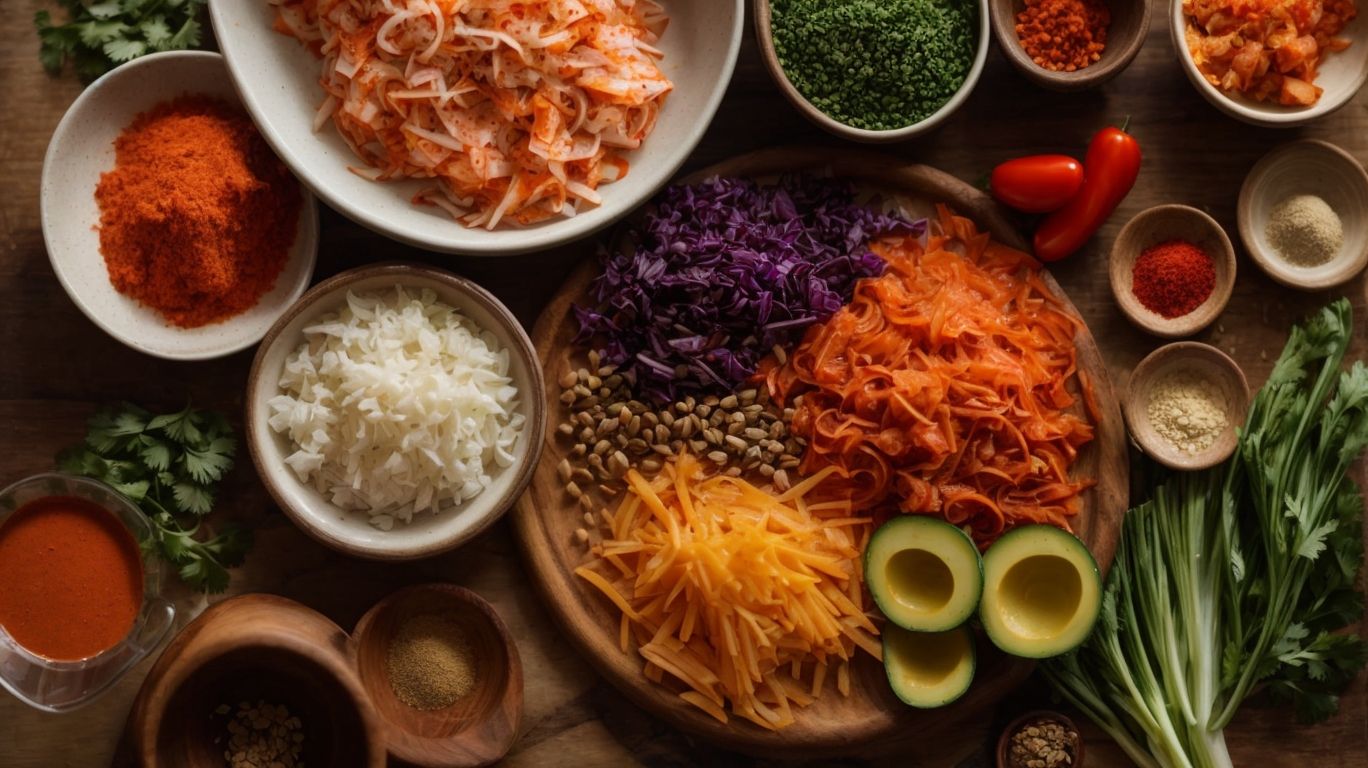
Credits: Poormet.Com – Samuel Baker
Cooking with kimchi opens doors to a world of possibilities, from traditional entrees to fusion dishes featuring kimchi-infused sauces and grain bowls.
Known for its tangy, spicy, and umami-rich flavors, kimchi can bring a unique twist to various dishes. Incorporating kimchi into stir-fries adds depth and complexity, while kimchi fried rice offers a satisfying blend of flavors and textures. For a creative twist, try using kimchi as a topping for tacos or burgers, adding a pop of flavor that elevates the dish. Kimchi can also be used as a base for marinades or dipping sauces, infusing a vibrant kick into meats and vegetables alike.
What Are Some Ways to Incorporate Kimchi into Cooking?
Incorporate kimchi into your cooking repertoire by trying recipes like kimchi lettuce wraps, sandwiches, or using it in slow cooker dishes perfect for wintry days.
If you’re looking for spicy kick, consider adding kimchi to your favorite stir-fry or noodle dishes. The fermented flavor of kimchi pairs beautifully with grilled meats like bulgogi, adding depth and complexity to the dish. For a creative twist, try incorporating kimchi into quesadillas for a fusion of Korean and Mexican flavors.
What Are Some Recipes That Use Kimchi as an Ingredient?
Explore a world of culinary possibilities with kimchi-infused recipes such as kimchi stew, pasta, salads, pizzas, and savory bacon or ham side dishes.
Kimchi’s tangy and spicy kick can elevate the flavors of various dishes. Try incorporating it into traditional recipes like kimchi fried rice or kimchi pancakes for a fusion twist. Kimchi adds a vibrant hue and tangy punch to tacos, quesadillas, and even grilled cheese sandwiches. For a refreshing take, whip up some kimchi slaw or kimchi bruschetta with fresh tomatoes and basil. The versatility of kimchi opens up a whole new culinary experience for adventurous food enthusiasts.
What Are the Health Benefits of Cooking with Kimchi?
Cooking with kimchi offers numerous health benefits, including probiotics from fermentation, vitamins from vegetables, and enhanced nutritional content.
Kimchi, a traditional Korean dish consisting of fermented vegetables and a variety of seasonings, has gained popularity worldwide not only for its unique taste but also for its positive impact on health.
Incorporating kimchi into your meals can significantly boost your gut health, thanks to the abundance of probiotics it contains. These beneficial bacteria aid digestion, support immune function, and improve overall gut flora balance.
How Does Cooking with Kimchi Affect the Nutritional Content?
The cooking process with kimchi can enhance its nutritional value by preserving fermented probiotics and essential minerals, while infusing dishes with spicy and tangy flavors.
When kimchi is cooked at high temperatures, there is a risk of diminishing some of the probiotics present in the fermented cabbage. The overall impact of cooking on kimchi’s nutrients is influenced largely by the cooking method employed. Fermentation remains a key aspect in the preparation of kimchi, as it not only enhances the preservation of probiotics but also aids in mineral retention. Through controlled fermentation, kimchi manages to retain a significant amount of its nutritional content, including essential minerals like calcium and iron.
What Are Some Potential Health Benefits of Eating Kimchi?
Consuming kimchi offers potential health advantages such as improved gut health, antioxidant properties, and support for digestion and the immune system.
Kimchi, a traditional Korean dish made from fermented vegetables and a variety of seasonings, is not only bursting with flavor but also packed with numerous health benefits.
One of the key reasons kimchi is praised for its impact on health is its probiotic content. Probiotics found in kimchi help promote a healthy balance of gut bacteria, which can improve overall gut health and contribute to better digestion.
The fermentation process involved in making kimchi enhances the bioavailability of certain nutrients, making it easier for the body to absorb essential vitamins and minerals.
Frequently Asked Questions
1. How do I incorporate kimchi into my cooking?
Kimchi can be used in a variety of ways in cooking. You can add it to traditional Korean dishes like kimchi fried rice or use it as a topping for burgers and tacos. It also works well in stir-fries, stews, and soups. Be creative and experiment with different dishes to find your favorite way to cook with kimchi!
2. Can I cook with kimchi if I’m not a fan of spicy food?
Absolutely! While kimchi is known for its spiciness, you can control the level of heat by adjusting the amount of gochugaru (Korean chili flakes) you use. You can also try using non-spicy kimchi varieties such as white kimchi or water kimchi.
3. How should I store kimchi for cooking?
It’s best to store kimchi in an airtight container in the refrigerator. This will slow down the fermentation process and keep it fresh for longer. Remember to always use a clean utensil when scooping out kimchi to prevent cross-contamination.
4. Can I substitute kimchi for other ingredients in a recipe?
Yes, you can! Kimchi can be a great substitute for other fermented vegetables like sauerkraut or pickles. It can also add a unique flavor to dishes that call for ingredients like vinegar, garlic, or ginger.
5. How can I make my own kimchi at home?
Making kimchi at home is easier than you think! All you need is napa cabbage, salt, gochugaru, garlic, ginger, and fish sauce. There are many tutorials and recipes online that can guide you through the process. Once you make your own kimchi, you can use it in your cooking just like store-bought kimchi.
6. Can I freeze kimchi for later use?
Yes, you can freeze kimchi, but it may change the texture and taste slightly. If you plan on freezing it, make sure to use it within three months for the best results. Thaw it in the refrigerator before using it in a dish. However, it’s always best to use fresh kimchi for optimal flavor and texture.

